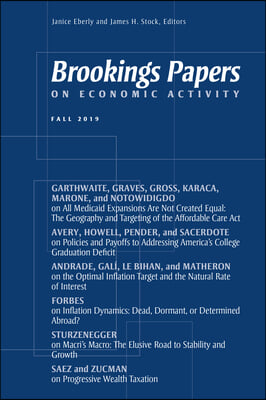论中国冲击的持续性
IF 2.7
3区 经济学
Q1 ECONOMICS
引用次数: 45
摘要
摘要:我们评估了2000年至2019年期间中国贸易冲击的持续时间及其对一系列结果的影响。这场冲击在2010年达到了顶峰,这使得人们能够对其影响进行近10年的分析。进口竞争对制造业就业、总体就业人口比和受贸易影响更大的美国通勤区人均收入的不利影响将持续到2019年。在整个研究期间,更大的进口竞争意味着制造业就业人口比率下降1.54个百分点,即观察到的价值变化的55%,并且通过总体就业率的相应下降吸收了86%的净失业。人口总数的减少(表明净外迁)只涉及外国出生的工人和25-39岁的本土出生的工人,这意味着失业是对贸易导致的劳动力需求收缩进行调整的主要手段。受负面影响较大的地区接受政府转移支付的幅度略有增加,但这些转移支付主要采取社会保障和医疗保险福利的形式。在最初受过大学教育的工人较少、工业更专业化的地区,不良后果更为严重。其影响是定性的,而不是定量的,类似于自20世纪80年代以来煤炭生产就业下降所造成的影响,这表明中国的贸易冲击为其他局部失业事件提供了经验教训。来自中国的进口竞争导致了当地劳动力市场人均收入的变化,这种变化远远大于标准定量贸易模型预测的收入效应的空间异质性。即使使用对日益增长的对华贸易给消费者带来的好处的更高端的估计,很大一部分通勤区似乎也遭受了平均实际收入的绝对下降。本文章由计算机程序翻译,如有差异,请以英文原文为准。
On the Persistence of the China Shock
ABSTRACT:We evaluate the duration of the China trade shock and its impact on a wide range of outcomes over the period from 2000 to 2019. The shock plateaued in 2010, enabling analysis of its effects for nearly a decade past its culmination. Adverse impacts of import competition on manufacturing employment, overall employment-population ratios, and income per capita in more trade-exposed US commuting zones are present out to 2019. Over the full study period, greater import competition implies a reduction in the manufacturing employment-population ratio of 1.54 percentage points, which is 55 percent of the observed change in the value, and the absorption of 86 percent of this net job loss via a corresponding decrease in the overall employment rate. Reductions in population head counts, which indicate net out-migration, register only for foreign-born workers and the native born who are 25–39 years old, implying that exit from work is a primary means of adjustment to trade-induced contractions in labor demand. More negatively affected regions see modest increases in the uptake of government transfers, but these transfers primarily take the form of Social Security and Medicare benefits. Adverse outcomes are more acute in regions that initially had fewer college-educated workers and were more industrially specialized. Impacts are qualitatively—but not quantitatively—similar to those caused by the decline of employment in coal production since the 1980s, indicating that the China trade shock holds lessons for other episodes of localized job loss. Import competition from China induced changes in income per capita across local labor markets that are much larger than the spatial heterogeneity of income effects predicted by standard quantitative trade models. Even using higher-end estimates of the consumer benefits of rising trade with China, a substantial fraction of commuting zones appears to have suffered absolute declines in average real incomes.
求助全文
通过发布文献求助,成功后即可免费获取论文全文。
去求助
来源期刊

Brookings Papers on Economic Activity
ECONOMICS-
CiteScore
10.10
自引率
0.00%
发文量
12
期刊介绍:
The Brookings Papers on Economic Activity (BPEA) is a semi-annual academic conference and journal that pairs rigorous research with real-time policy analysis to address the most urgent economic challenges of the day. Working drafts of the papers are presented and discussed at conferences typically held twice each year, and the final versions of the papers and comments along with summaries of the general discussions are published in the journal several months later. The views expressed by the authors, discussants and conference participants in BPEA are strictly those of the authors, discussants and conference participants, and not of the Brookings Institution. As an independent think tank, the Brookings Institution does not take institutional positions on any issue.
 求助内容:
求助内容: 应助结果提醒方式:
应助结果提醒方式:


